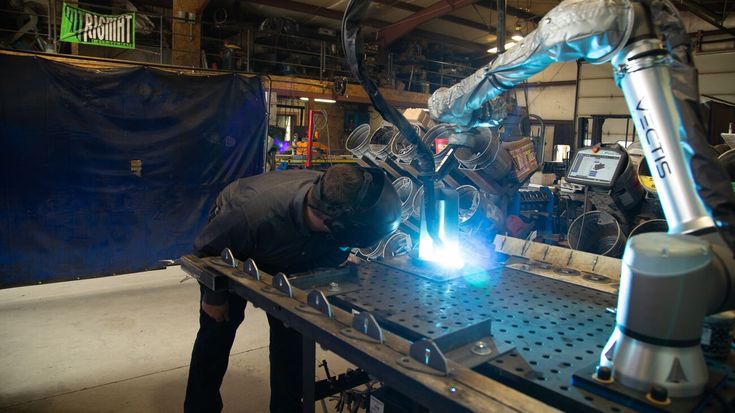Without welders the world would fall apart. Literally. With welding jobs being crucial for communities across the world, demand for welders is only set to grow over the next decade.
Welding is synonymous with our built world and has ancient roots, with the earliest examples of pressure or forge welding coming from around 3000 BCE. At first, two pieces of metal were heated and hammered together to create a solid bond. Welding as we would recognize it today can be traced back to the late 19th century with the invention of electrical welding. Nowadays, according to one market research report, the industry is set to reach a market size of around $28.66 billion around the world by 2028.
But the industry’s workforce has an uncertain future. According to the American Welding Society, by 2026, 336,000 new welding professionals will be needed in the US. Similar shortages are felt across the world.
The art of welding
Welding is more than connecting pieces of metals together. It is both technical and creative, requiring a trained human eye and impressive manual dexterity for the most complex metal welds. It takes several years to master the art of welding and acquire sufficient experience to gain the trust and accolade of companies and fellow experts. With the creativity and passion that it constitutes, welding is worthy to be called an art form.
However, it’s not without its challenges. The work itself is dangerous in nature, requiring welders to be up close with extremely high temperatures, molten materials and welding fumes. The work can also be repetitive, involving long simple welds or hundreds of identical welds. Perhaps unsurprisingly, there are fewer young people going into welding and developing these skills. Like some other trades, the profession suffers from something of an image problem and the skill involved isn’t widely appreciated.
This is leading to a skills shortage, and as the ageing welding workforce retires, it’s becoming harder to meet rising demand for welding. Where do welders fit in the modern economy? They are a critical part of so many industries. This includes heavy industry and metal fabrication, appliance manufacturing, energy, infrastructure, heating, ventilation and air conditioning and construction. A shortage of welders could even threaten the implementation of major infrastructure projects, such as laying new pipes for district heating or building windmills.
But what if welders could find better tools to make the conditions and workload of the job more satisfying? This is where robots come in.



